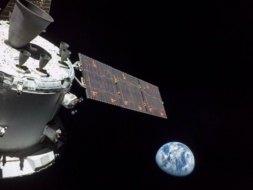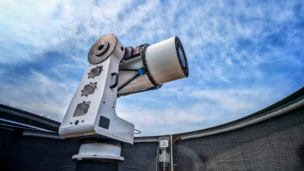The Space Development Agency (SDA) awarded another batch of big ticket contracts yesterday to the three companies that will build the Tranche 2 Tracking Layer of the Proliferated Warfighter Space Architecture (PWSA). The three contracts total more than $2.5B in potential value.
“The marketplace is responding to the demand signals for our spiral development model,” SDA director Derek Tournear said in a release. “The agile response across the space industry is critically important as we deliver to the warfighter this no-fail mission capability of missile warning, missile tracking, and missile defense.”
This time around: Each of the three contractors signed fixed-price deals that require them to supply 16 satellites with wide field-of-view missile identification and tracking capabilities and two satellites equipped with infrared sensors for early detection, for a grand total of 54 new birds. The contracts:
- L3Harris ($LHX) for $919M
- Lockheed Martin ($LMT) for $890M
- Sierra Space for $740M
Sierra is new to the large and growing group of SDA contractors. L3Harris and Lockheed Martin are old pros, having secured several previous deals with the agency.
A PWSA refresher: The SDA is proving that the Pentagon can build a sprawling constellation for secure military applications, including communications and missile defense, in an iterative way that’s faster than traditional defense contracting.
- Each batch of satellites is dubbed a “tranche.” The agency originally planned to launch a new tranche every two years.
- “Layer” refers to the capability of the satellites. The contracted satellites are divided between the Transport layer, which provides communications, and the Tracking layer, which provides missile defense capabilities.
The SDA’s PWSA awards have become a regularly occurring and lucrative opportunity for satellite manufacturers across the US space industry. In addition to the three awardees for this Tranche 2 Tracking Layer opportunity, York Space Systems, Rocket Lab ($RKLB), and Northrop Grumman ($NOC) have also secured satellite manufacturing deals for the project.
What’s next? Despite lawmakers repeatedly urging the DoD to go faster, politics could threaten the progress of these contracts. The project could be held up if Congress doesn’t pass a full defense budget by March, the agency noted.
The SDA has already started deploying the PWSA, having launched Tranche 0 last year. Tranche 1 is slated for launch this year and next, and Tranche 2 is looking to 2026.




